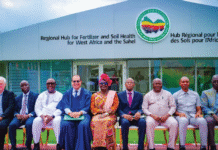By Peter Setou
The conclusion of the 55th edition of the ANC’s five-year elective conference marked a crucial moment in South Africa’s political landscape. With 4,000 delegates in attendance, the conference witnessed the formulation of ambitious resolutions spanning social, economic, and political spheres. While public attention on political resolutions is often fleeting, the ANC’s commitments hold particular significance due to their impact on policy direction, constitutional matters, and government oversight.
For the ruling party, the resolutions adopted at the last elective conference held a year ago play a pivotal role in shaping and influencing government policy across a wide spectrum of social and economic matters. However, the challenge lies not just in identifying problem areas and proposing remedial actions, but in effectively implementing policies and closely monitoring progress.
The ANC, whether as a political party or the governing entity, has often faced criticism for a less-than-stellar track record in policy implementation and enforcement. The formulation of commendable policies is scuttled by a gap in execution and a lack of efficient monitoring mechanisms. Following the 55th edition of the ANC’s elective conference, it is perhaps worthwhile to reflect on some of the fundamental discussions and resolutions of the conference, especially those relating to land reform.
Expropriation without Compensation – Progress on the Expropriation Bill
There is a widely shared consensus that while the government has made strides in returning land to communities displaced by repressive apartheid policies, the overall progress in the land reform program has been slow. According to the Commission on Restitution of Land Rights (CRLR), a total of 82,976 land claims lodged before the cut-off date of 30 December 1998 have been settled. This translates to 3.8 million hectares benefiting 2.3 million beneficiaries, with the allocation of R22 billion to those who opted for financial compensation, R25 billion for the acquisition of land, and R5 billion for grants.
Despite this progress, there is growing frustration and discontent regarding the sluggish pace of land reform. This is corroborated by the recent announcement by the Commission on Restitution of Land that it would take South Africa about 30 years and more than R170 billion to settle land claim backlogs with the current budget at the current rate.
Several reports, including the High-Level Panel Report (Motlanthe report) and the Presidential Advisory Panel on Land Reform report, have delved into the causes of this slow progress. In essence, both reports concur on several key impediments: a lack of government capacity and coordination, corruption, elite bias, inadequate legislative frameworks, uncertainty about reform objectives, budgetary constraints, and insufficient post-settlement support.
On the legislative front, the ANC and other left-leaning political parties cited the amendment of Section 25 of the Constitution – explicitly allowing land expropriation with compensation – as a transformative solution to expedite land reform. The ANC’s 55th Elective Conference rightly acknowledged the necessity of policy interventions to accelerate land reform, emphasising the enactment of the Expropriation Act, currently in an advanced legislative stage, as a crucial puzzle piece. The Bill aims to align expropriation law with the constitution and to ensure, amongst other things, that expropriation is not arbitrarily used and only used as a last resort. The purpose of expropriation must be clear and fair, and affected parties must have recourse to the courts. Furthermore, the Bill provides that the owner must receive a just and equitable amount as compensation for the property, reflecting an equitable balance between public interest and the interest of the owner. The Expropriation Bill, unlike the constitutional amendment, requires only a 50% majority vote, and it incorporates specific provisions for expropriation without compensation and lists several factors or instances where this will be permissible.
It is expected that some of the provisions of this Bill are likely to be challenged in the courts by interested and affected parties. It is crucial that this process is concluded to provide certainty to the market.
The challenge of making underutilised land productive, and the role of the Land Reform and Agricultural Development Agency
The task of making underutilised land productive in South Africa is a multifaceted challenge that demands a comprehensive approach. President Cyril Ramaphosa rightly highlighted the numerous threats facing the country’s agricultural land, including land degradation, water scarcity, and urban encroachment. The imperative to broaden access to agricultural land for both commercial production and subsistence farming has been acknowledged as a national priority.
While the allocation of farms to emerging farmers on underutilised state land with 30-year leasehold rights aims to safeguard those lands for farming purposes, it is important to take stock of who has benefited and evaluate successes and challenges faced by the beneficiaries with a view of making improvements. While this is a positive step, the communal land ownership and leasehold model may hinder emerging farmers from leveraging land ownership to access essential capital. The inability to raise capital or lack of access to finance and restrictions that inhibit the use of land as collateral further compound the issue.
While the government recognises that the lack of post-settlement support is one of the major factors that has contributed to sub-optimal production on many allocated farms, there remains a gap in the provision of such support and capacity building among emerging and small-scale farmers, hindering their ability to capitalise on market opportunities and integrate into value chains.
In response to the challenges facing the land reform program, President Ramaphosa announced the creation of the Land Reform and Agricultural Development Agency in 2021. The agency is envisioned to collaborate closely with the government on various agricultural sector issues, from skills transfer to the practical implementation of land reform.
While the outcomes of the 55th Elective Conference are credited with making astute observations about land reform impediments and the identification of potential interventions, there is a perceived lack of follow-through and coordination in implementing and monitoring these resolutions.
Having worked with beneficiaries of the land reform program for over 10 years now, the Vumelana Advisory Fund is of the view that there is an opportunity to improve the land reform program and refine proposed resolutions for practical viability. The Land Reform and Agricultural Development Agency, once implemented, could play a significant role in driving a successful land reform program.
In this regard, lessons learned by organisations such as Vumelana should be shared to ensure effective implementation of an efficient land reform program for the benefit of beneficiaries and the economy.
The agency, if run effectively, could also serve as a vital instrument for effective land reform, as it could ensure national coordination of land reform efforts, help reduce red tape, and become the ideal institution for decentralised redistribution of agricultural land.
Access to water rights
Access to water rights remains a challenge in enabling successful farming and the success of the land reform program. The need to fast-track solutions to problems impeding rural communities’ access to water rights has been acknowledged. This needs to be addressed urgently if we are to ensure the effective use of restored land.
We need to acknowledge that only a fraction of South Africa’s land is suitable for agriculture. Discussions on land reform should extend beyond the agricultural sector to explore eco-tourism opportunities that can be explored on restituted land. The focus should be on revitalising rural economies and improving the livelihoods of people living in these areas to ensure inclusive participation in the economy, enhance productivity in communal areas, and make meaningful efforts to address unemployment and poverty.
Develop strategies to increase the productivity of land in communal areas
Another crucial resolution passed during the 55th National Elective Conference was to enhance the operational capacity of the Land Bank to help the institution fulfil its mandate. The Land Bank should be supported and adequately resourced to enable the institution to fulfil its mandate.
The productivity of numerous medium and large-scale farmers is being adversely affected by persistent power outages and the lack of support for these farms. Recognising the pivotal role of uninterrupted and reliable energy supply in the agricultural sector, the Department of Agriculture, Land Reform, and Rural Development (DALRRD) has collaborated with the Land Bank to introduce a blended financing instrument. This initiative aims to assist farmers in securing access to alternative energy solutions to mitigate the impact of recurring electricity outages. However, it is yet to be determined how many farmers will benefit from this fund. The energy crunch facing the country will be with us into the foreseeable future, hence it is crucial that this fund should be expedited to ensure the sustainability of the agricultural sector.
While the ANC’s 55th Elective Conference has identified key issues and potential interventions for land reform, there is a need for better coordination and follow-through. Legislative changes may provide additional tools for land allocation and create a legal framework for addressing the challenges, but it is crucial to recognise that legislative measures alone will not overcome structural impediments.
The challenges of making underutilised land productive in South Africa necessitate a holistic and coordinated approach. Coordination and follow-through on these resolutions will enable progress in the land reform program. It has been a year since these resolutions were made. Now, implementation, monitoring, and evaluation of actions should take precedence.









